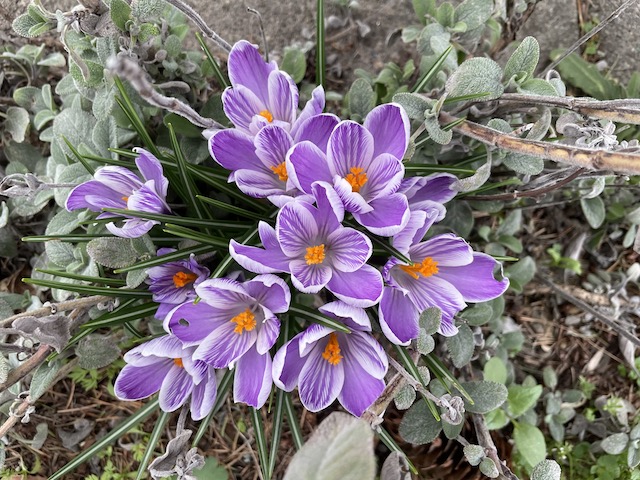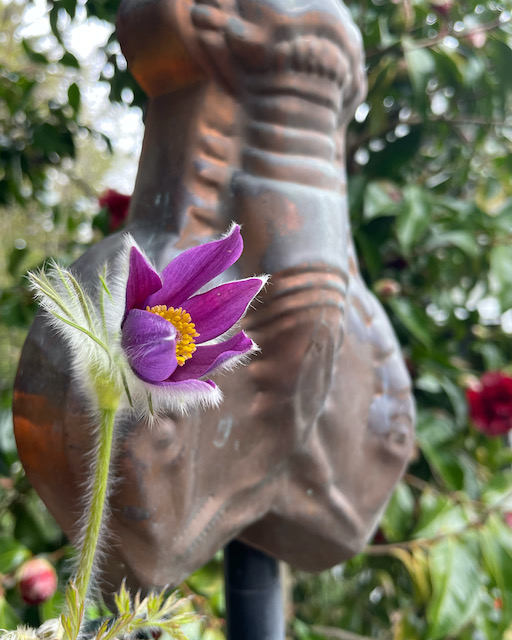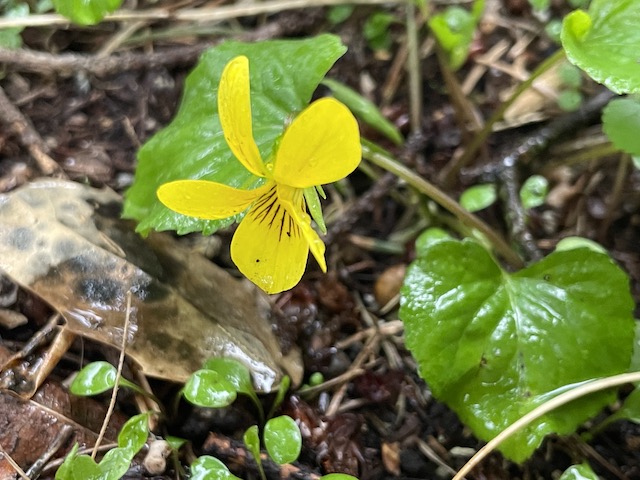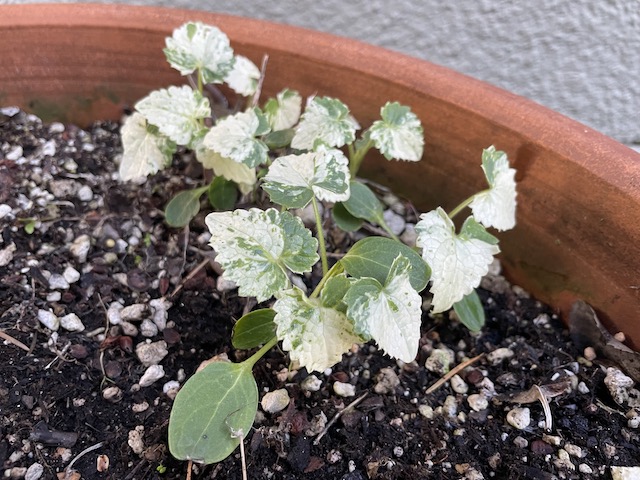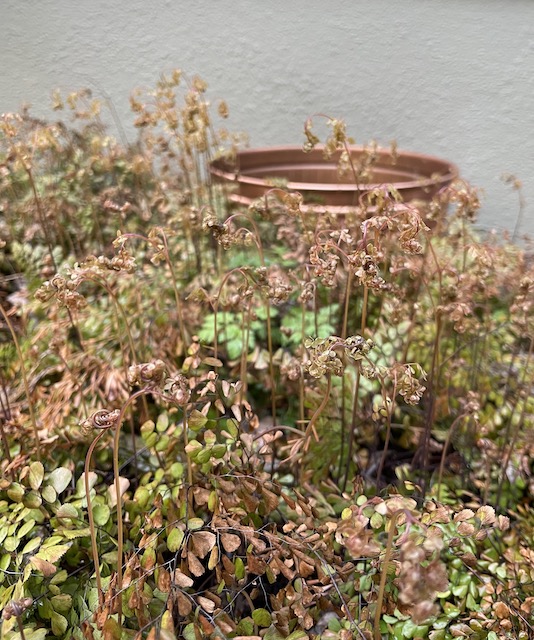‘Twas a long month last month… It was so long I’m late to post this, and it was so cold it induced a lot more numbness in my hands and feet than I’d like to remember. Overall, this spring has not made me smile much—yet. I hope it does soon. I suspect that it will, but the cold has created a frosty chill.
I want to smile again and feel more like my cheerful self. It was not a good winter, and to be perfectly honest, my holiday season was an overturned apple cart that I’ve not yet completely baked into tarts and pies. C’est la vie. We all have sudden surprises.
This is what happens after you’ve lived a bit of an isolated existence due to chronic illness for several decades. I’m learning life lessons later than is ideal, but I’m living. That is all that matters.
Life is change and turmoil.
Life is adaptation and renewal.
Life is death and birth.
Life is decay and decomposition.
In the garden, we find all of this, and at the start of April, I can say I’m finding myself in a garden revival here at home. I can no longer tolerate looking at certain mistakes, poor choices, and am trying harder to make better ones.
Gardeners often rejoice after making good choices. Some feel so overcome by this that they make dramatic career changes, or at least hope to do so. I suppose I did that at one point, but I care more about growing small crops, and working directing with crop propagation. As I work to design my garden with more intention, it’s funny how differently I feel about the plants. They reflect more of me, and I’m self-conscious about that.
There is no reason why at this point I shouldn’t feel self-satisfied about all of this. I’m working extremely hard doing additional strenuous physical labor on my days off. It’s the self-righteous smugness that ruins something like this, and any hint of my own ego stings. The egos of others in my industry is pain enough. So often they make me cringe. That’s part of any creative industry though. It’s funny how hyperaware I am of nipping any bad habits in the bud. Careful artful pruning is something I can obsess over for hours—days even.
Pruning with great relish, and rejuvenating my days, is bringing me great inner happiness. This last weekend I lost myself in the Buxus sempervirens. No, I’m still not smiling, and I don’t quite feel like myself again yet. I’m working on cultivating that too, at least I’m regrowing more of the me I missed so much. Like with any garden, it will take time and patience. For now, I’m happy to be slightly chilled, lost in the maze that is my own labyrinth of self discovery.
I will emerge when it’s time.
One: Who doesn’t love to see blooms in the spring? I honestly don’t have many, and I wish I had more this year. These Crocus versus ‘Pickwick’ flowers at least welcomed me home at the curb for many days.
Two: Each year I’m reminded of the green flower phase I went through years ago when I first planted my garden. One of the plants I found at a sale was Anemone nemorosa ‘Virescens’. It’s been a perfectly reliable plant for me and it has spread slowly.
Three: Pulsatilla halleri ssp. slavica is a new one for me. An alpine plant useful in containers and rock gardens, this one will be going into a nice hypertufa container and we’ll see how it does.
Four: It feels to me like I’ve been taking the same photo of this Viola glabella colony for years now. Originally purchased so I could sell the seeds of this native online, it’s not been a project that I’ve ever been able to harvest much from but the clump continues to slowly spread. Maybe this year, it will be “fruitful”.
Five: There’s no need to re-introduce the Queen of my plant-y realm, but if you’ve not yet met her, this is Camellia japonica ‘Black Magic’. I adore her.
Six: One of the things I take great pride in is being able to grow more ferns from spore. They’re all special to me. Sadly I’ve lost a lot due to doing too much at once and neglect, but these have made it! Cheilanthes wootonii aka Myriopteris wootonii—this one is a beauty.
Seven: Here is yet one more crop I’ve had in production so I can eventually offer seeds of it for sale online. Lunaria annua ‘Variegata Alba’ is not disappointing at all in terms of its variegation. I can’t wait to see it bloom.
Eight: I feel like this is always in my Top 10. That copper-colored new growth on the Adiantum venustum just gets me every time.
Nine: All of the seeds. There’s just too much ugly in my garden after this winter and I’m becoming keenly aware that I need to take pride in my expertise when it comes to seed propagation and to the importance of what I do. I have decades of experience now and I cherish to my core the other professionals in my world who’ve acknowledged, honored, and shared this keen interest with me. Domestically and internationally we’ve had private discussions about conservation and dissemination. I love seeds.
“Disseminate” being my word for 2023.
From Wiktionary: Etymology. From Latin dissēminātus (“broadcast”), past participle of dissēmināre, from dis- (“in all directions”) + sēmināre (“to plant or propagate”), from sēmen, sēminis (“seed”).
Ten: Lastly, I will add the hybrid Salix whips I bought for next to nothing off of EBay many moons ago. My living willow arbor continues to change and grow as I do, but this year I’ve had to attack the huge branches that I let grow too large, and too heavy. These threaten the integrity of the whole, and I got lazy, and was too scared to prune them off. Being scared can be a rush though when you have a chainsaw in hand. The crash could break things.
But what is worse, sitting back passively, doing nothing and watching nature take its course, or taking action? You decide. I mean we all make these choices daily, don’t we?
Knowing it might crash, and I might too, is scary. The odds are not in my favor since I waited so long, but I can still steer this ship ashore. And it’s not really a ship, so if I screw this up, I can begin again. That much I know to my core.
And yes, we all have that power to decide daily.
All I can say, is that it feels great to prune. Let’s grow.

